If you’re staying at Lava Coliving on the island of São Miguel, it won’t take long before someone brings up the market. On Thursdays and Saturdays, Mercado Agrícola de Santana opens just down the hill—a short walk, a gentle slope, and a turn past a cluster of low buildings.
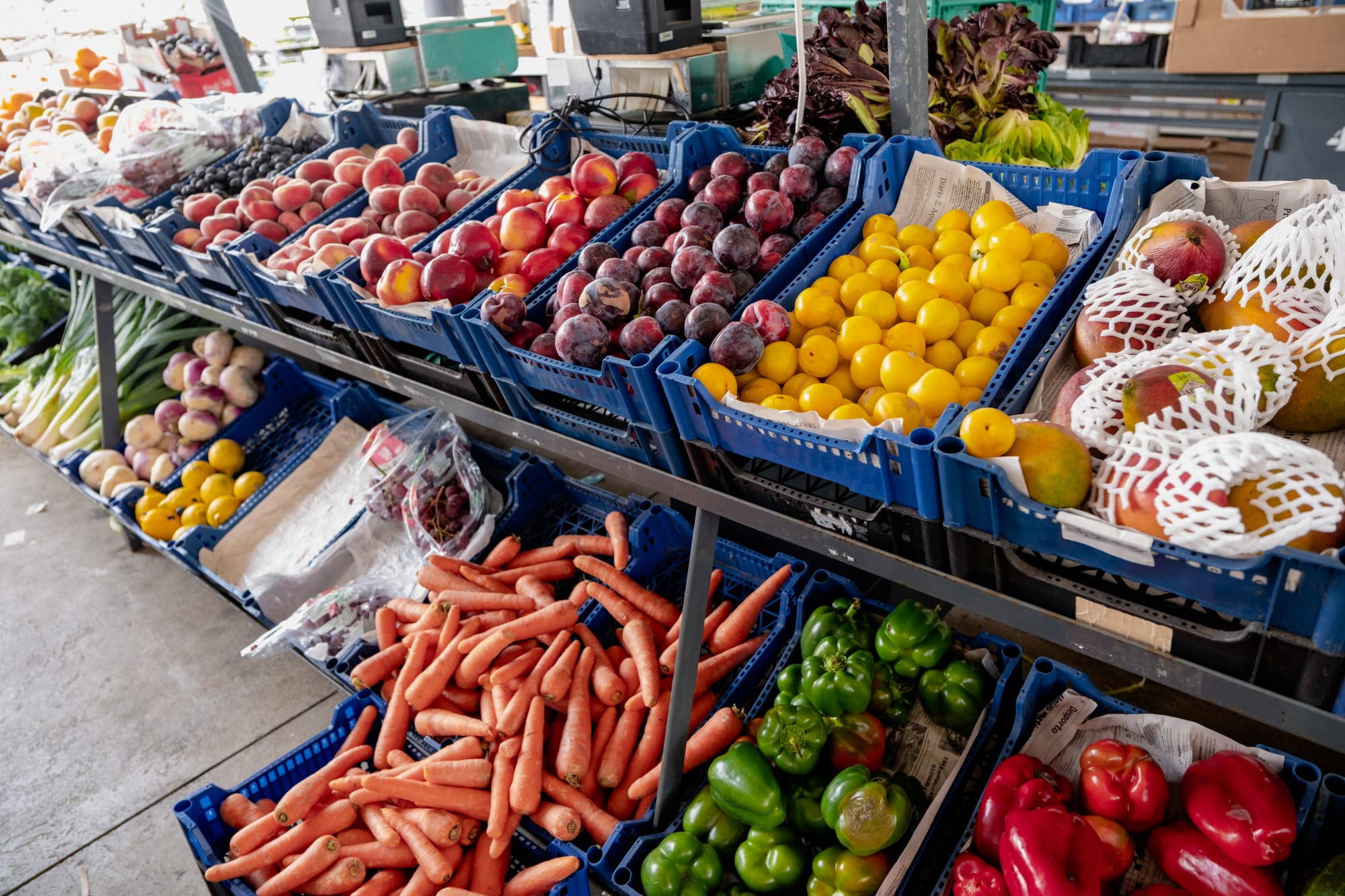
The market isn’t large, but it offers plenty. You arrive and immediately find yourself slowing down—not out of obligation, but because there’s a kind of quiet energy to the place. Rows of crates filled with fruit and vegetables, vendors chatting with familiar customers, the low shuffle of feet over concrete.
What you’ll find (and what we bought)
Most of what’s on offer is fresh produce grown nearby. The kind of food that still holds the texture and smell of where it came from. Carrots and beets with a bit of soil still clinging to the skin. Onions with their stalks intact. Zucchini, cucumbers, bright red tomatoes, bell peppers in all shades from green to gold.
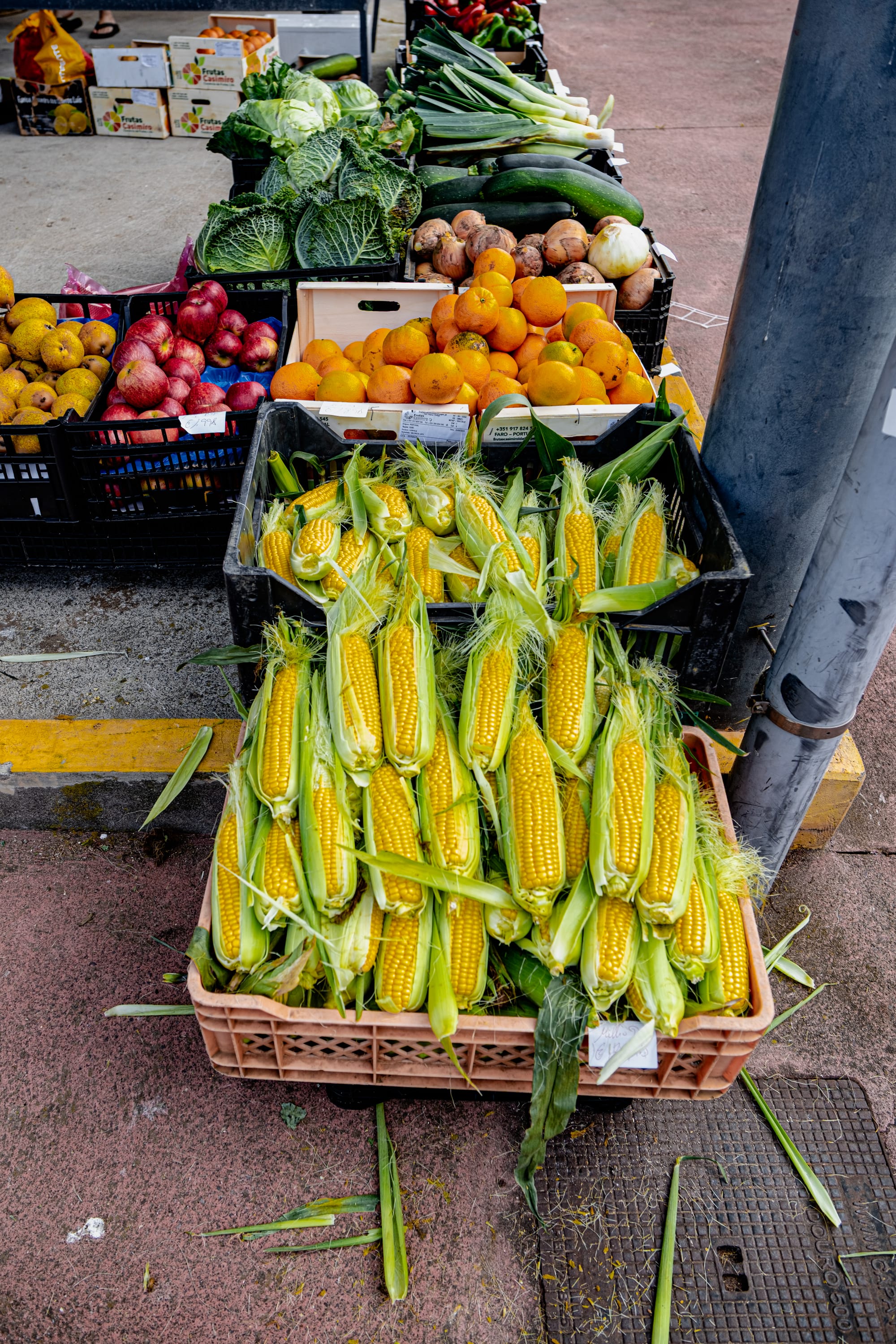
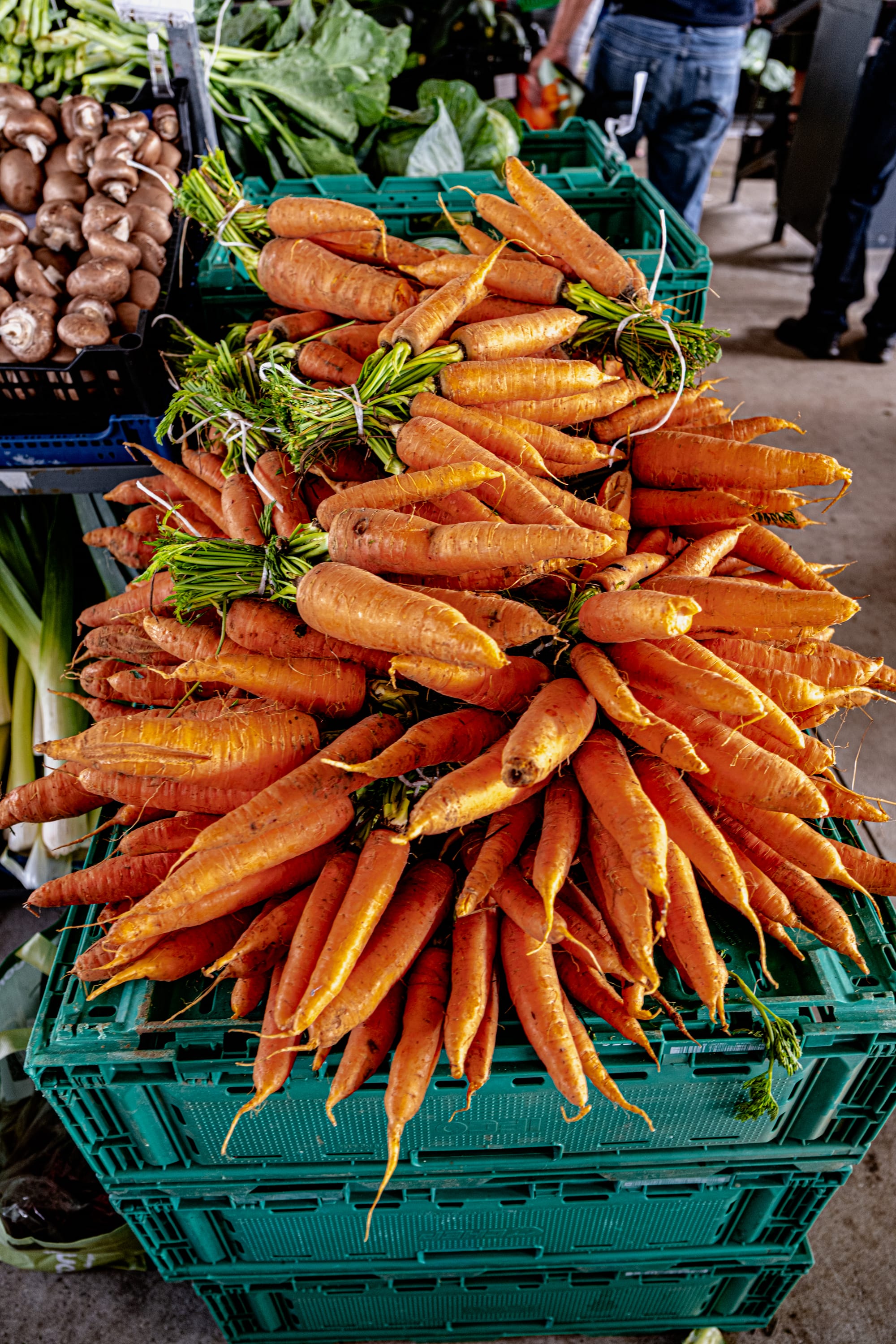
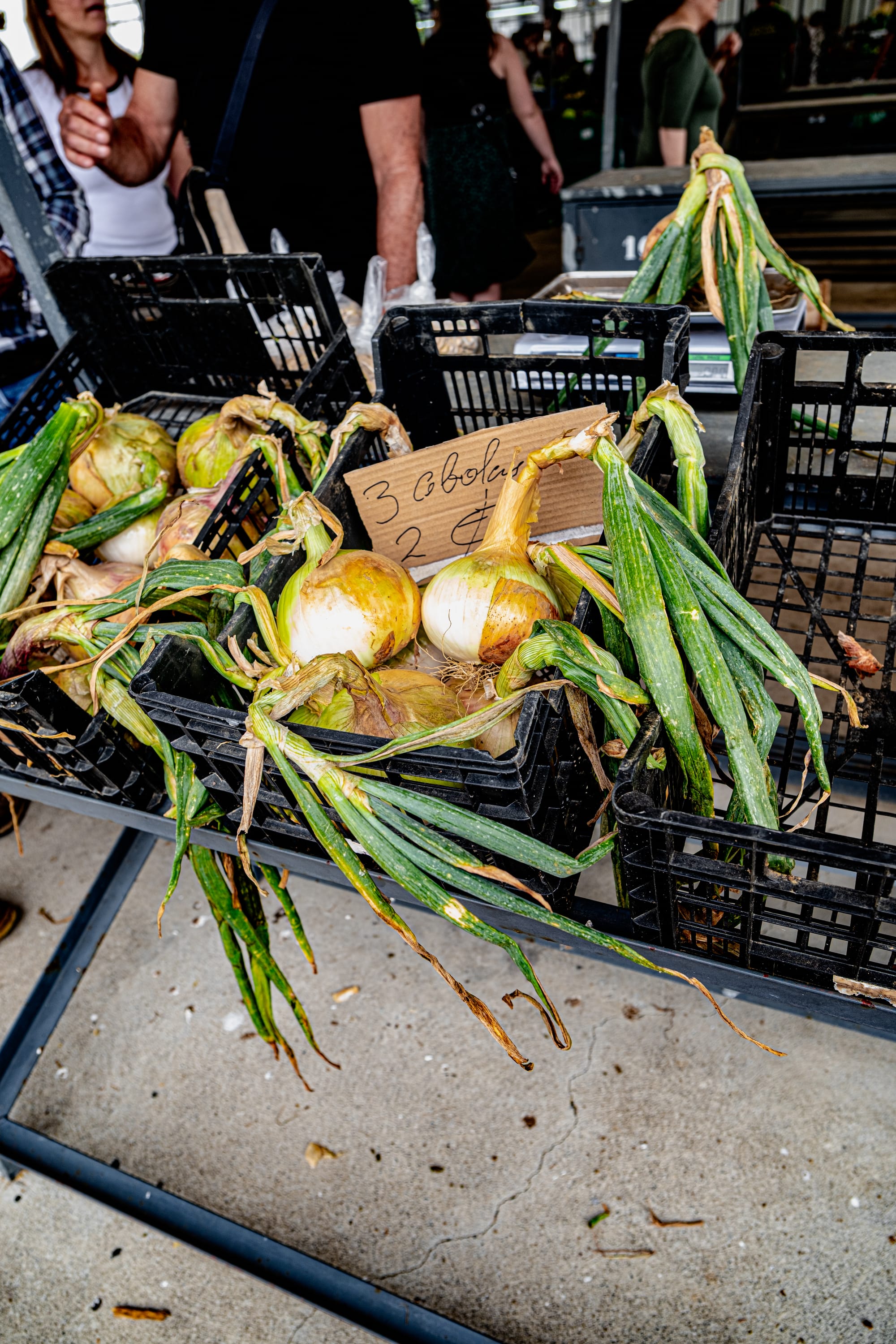
Peak produce at Mercado de Santana—vivid, abundant, and pulled fresh from nearby fields
You’ll also see crates of lemons with thick, uneven rinds. Corn sold in the husk, still sweet and slightly warm from the sun. Bananas in dense bunches—some underripe, some almost too soft.
On the fruit side, things shift from week to week: loquats, peaches, plums, dark grapes in crinkled plastic bags, apples with that quiet waxy sheen of familiarity.
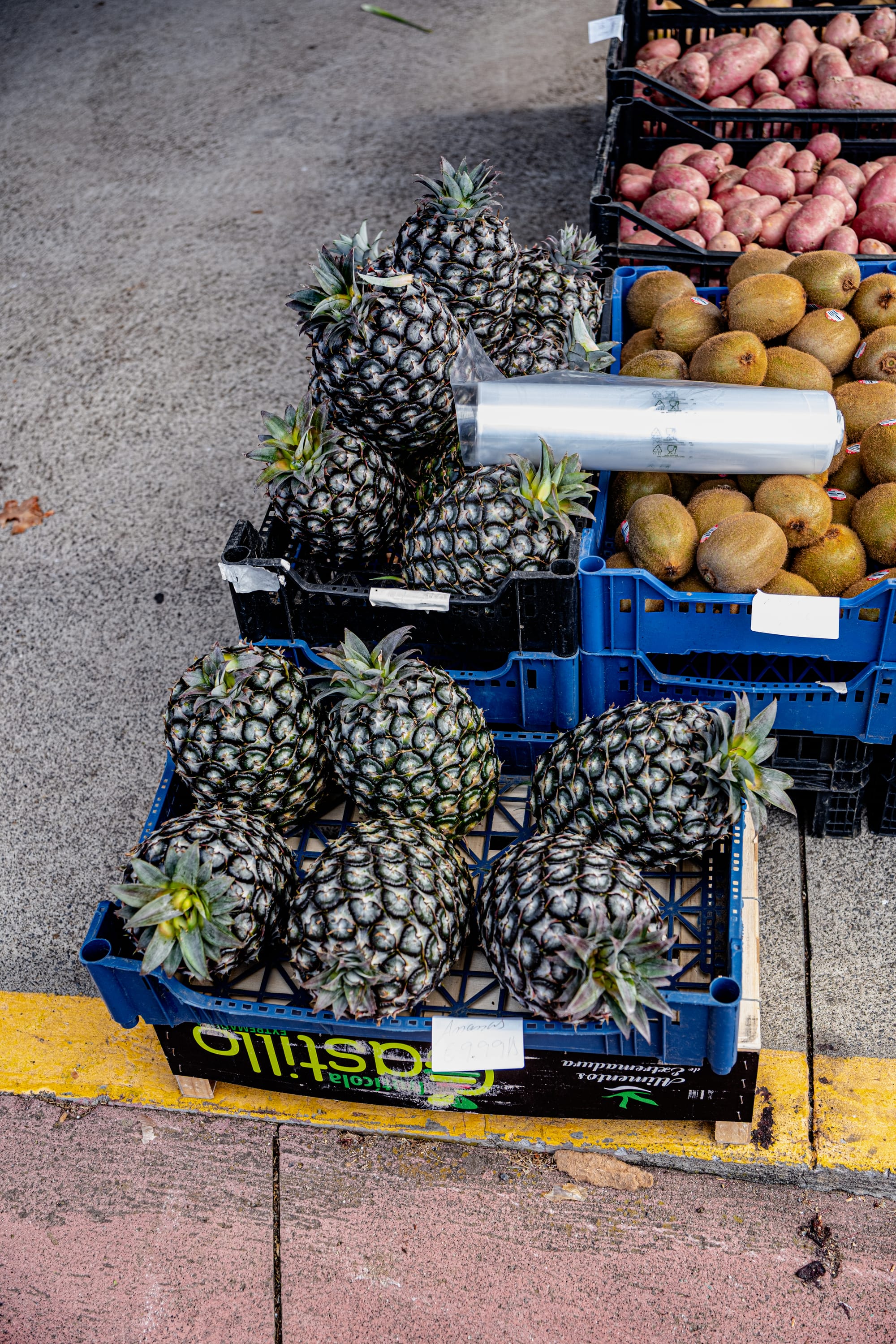
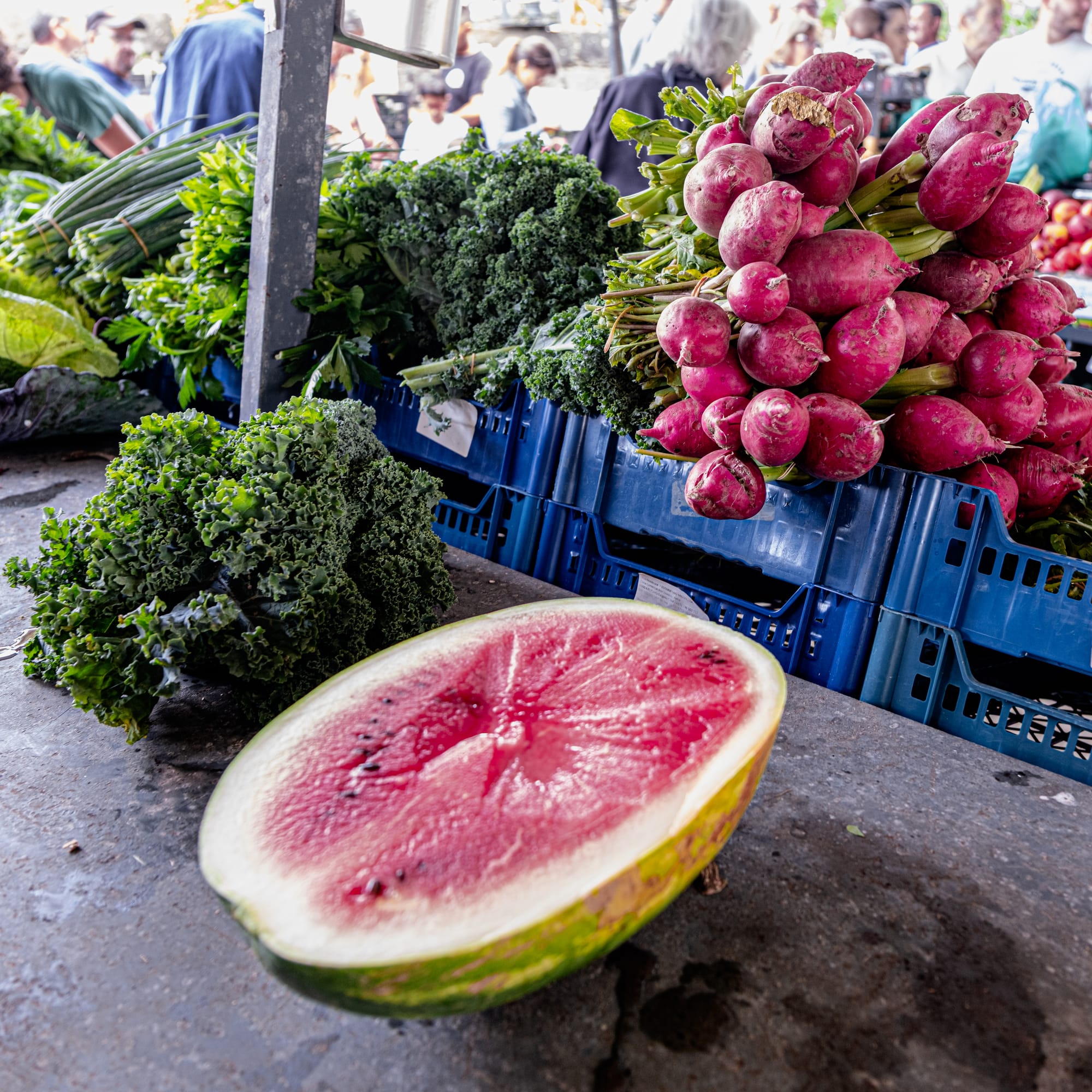
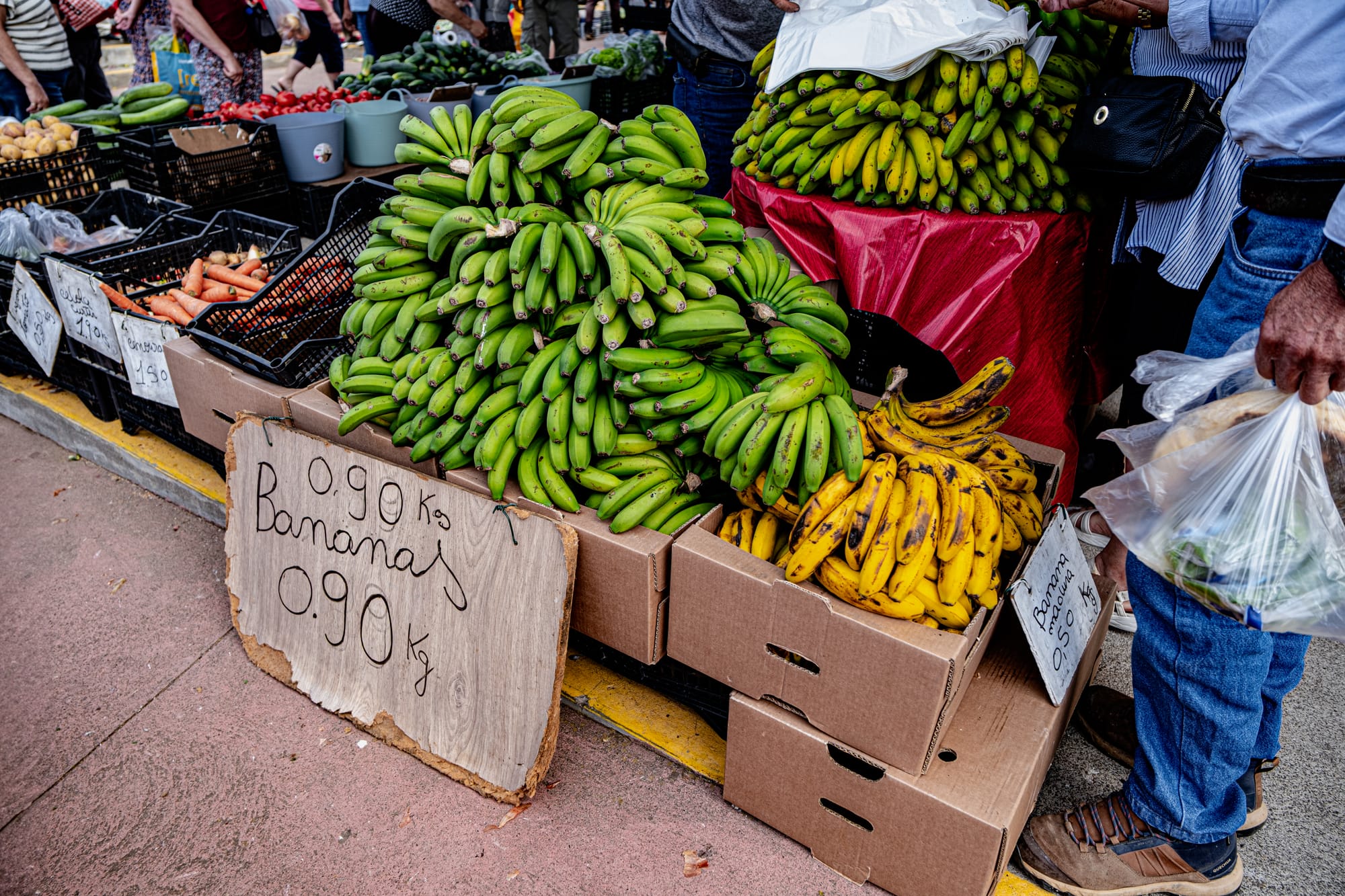
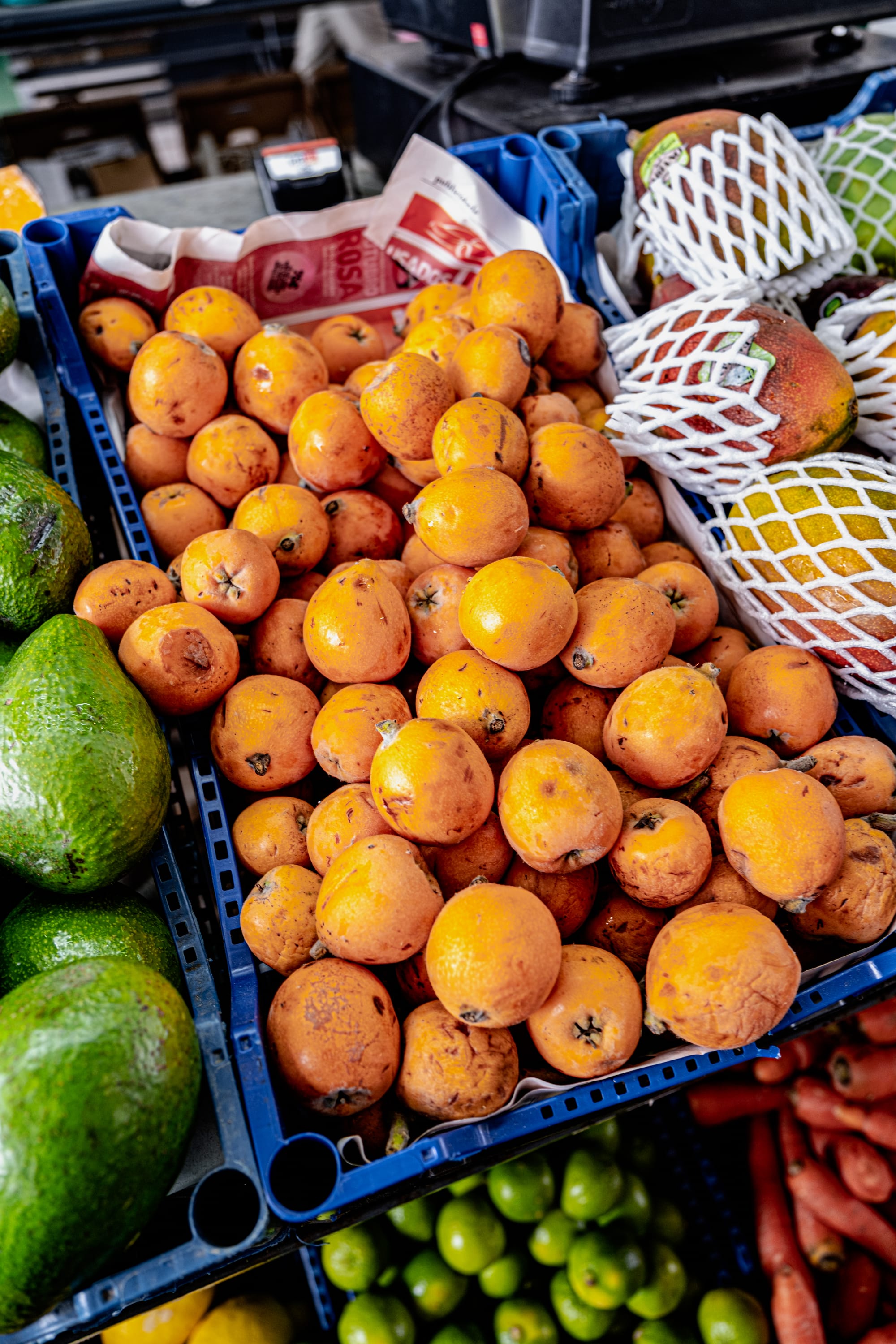
Fruit in every form—stacked, sliced, ripening, and ready—at Mercado Agrícola de Santana
The pineapples are from the island—shorter and sharper than the ones you’ll find in a supermarket, with a flavour that hits quickly and doesn’t hang around.
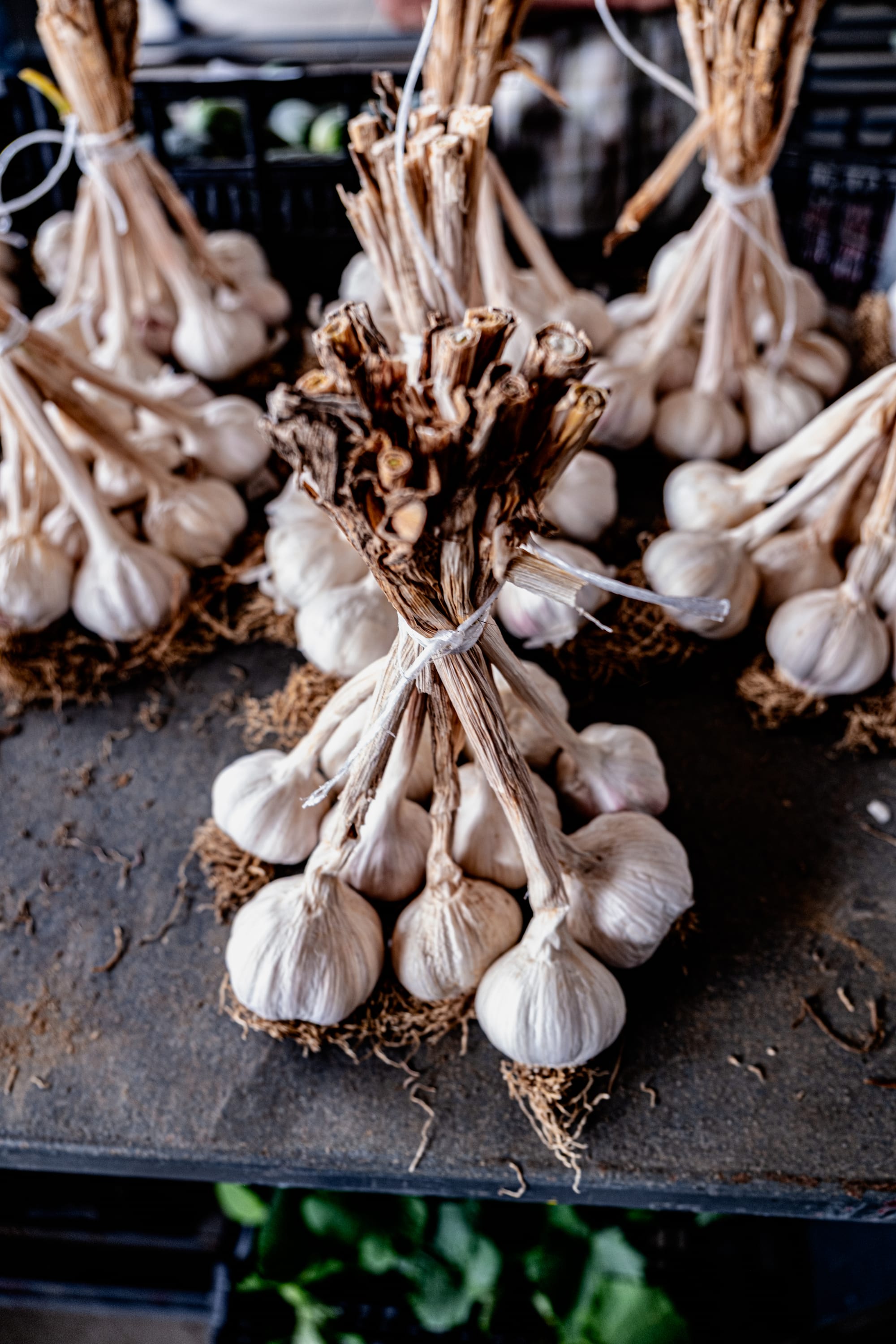
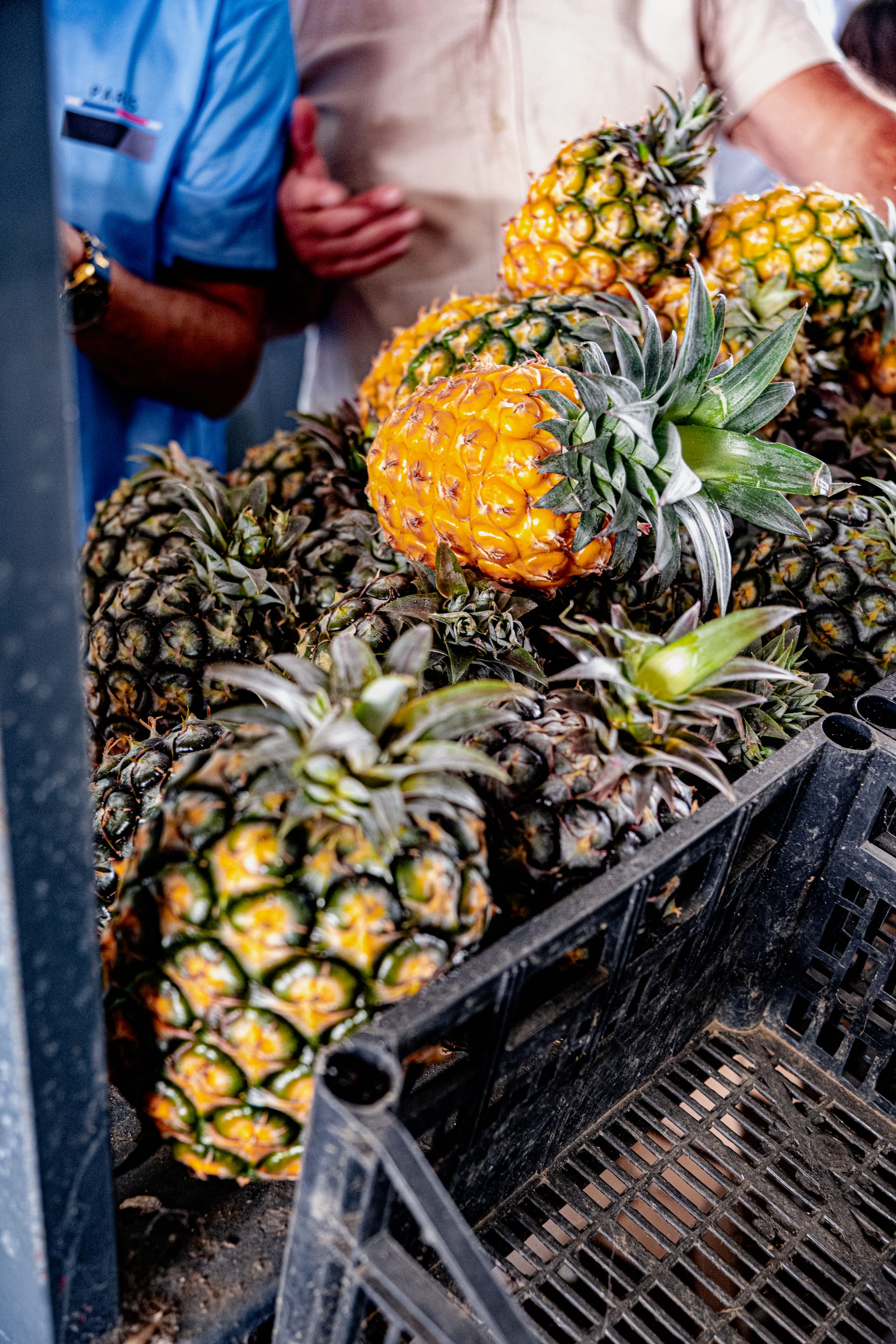
Island staples—garlic tied in bunches and pineapples ripened to gold
Alongside the fruit and vegetables, there are small, slightly unexpected things. Bouquets of lilies in plastic tubs. Homemade spice blends in unlabelled bags. A mushroom grow kit with Azorean branding. Herbal teas laid out on a folding table, and bars of local chocolate wrapped simply.
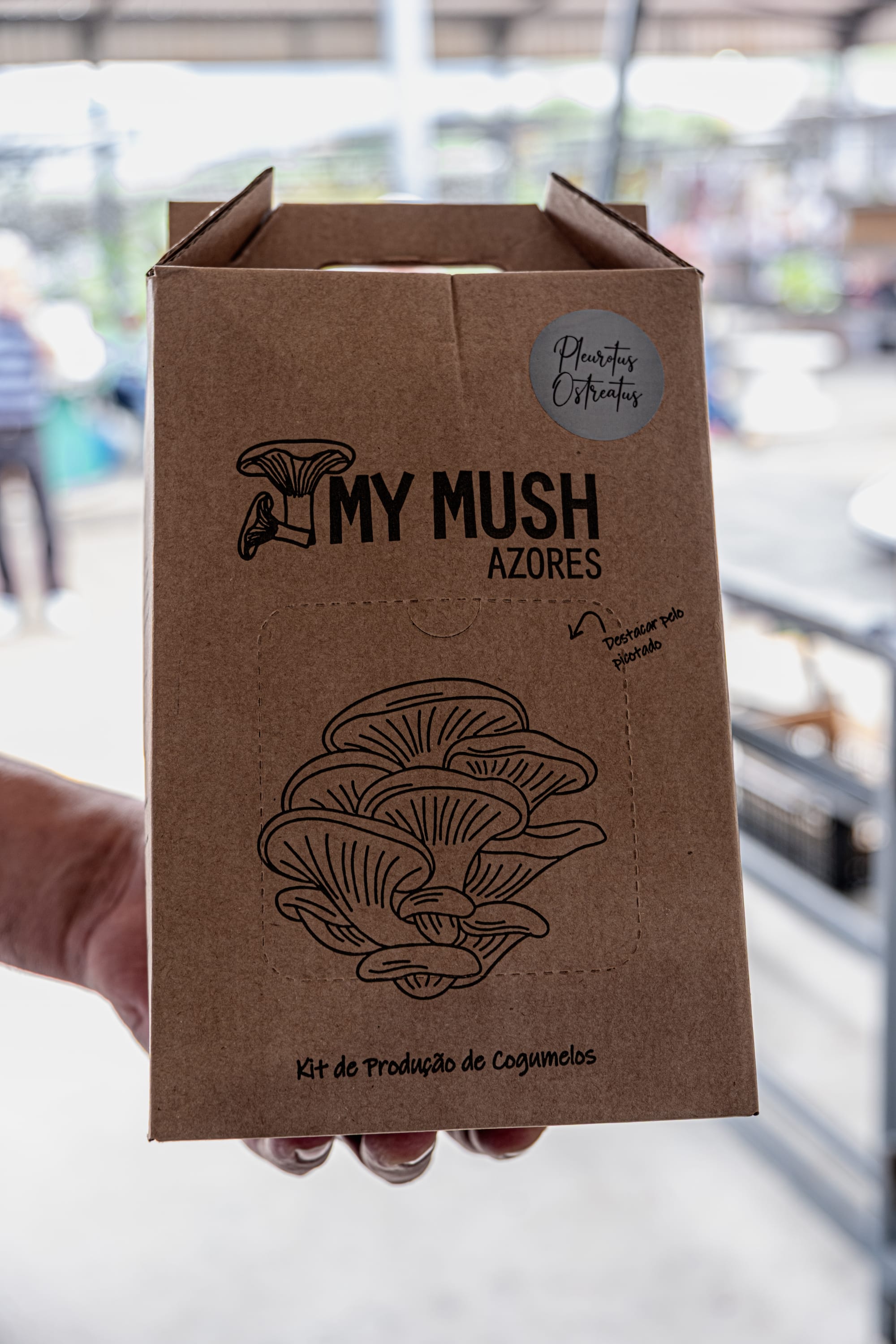
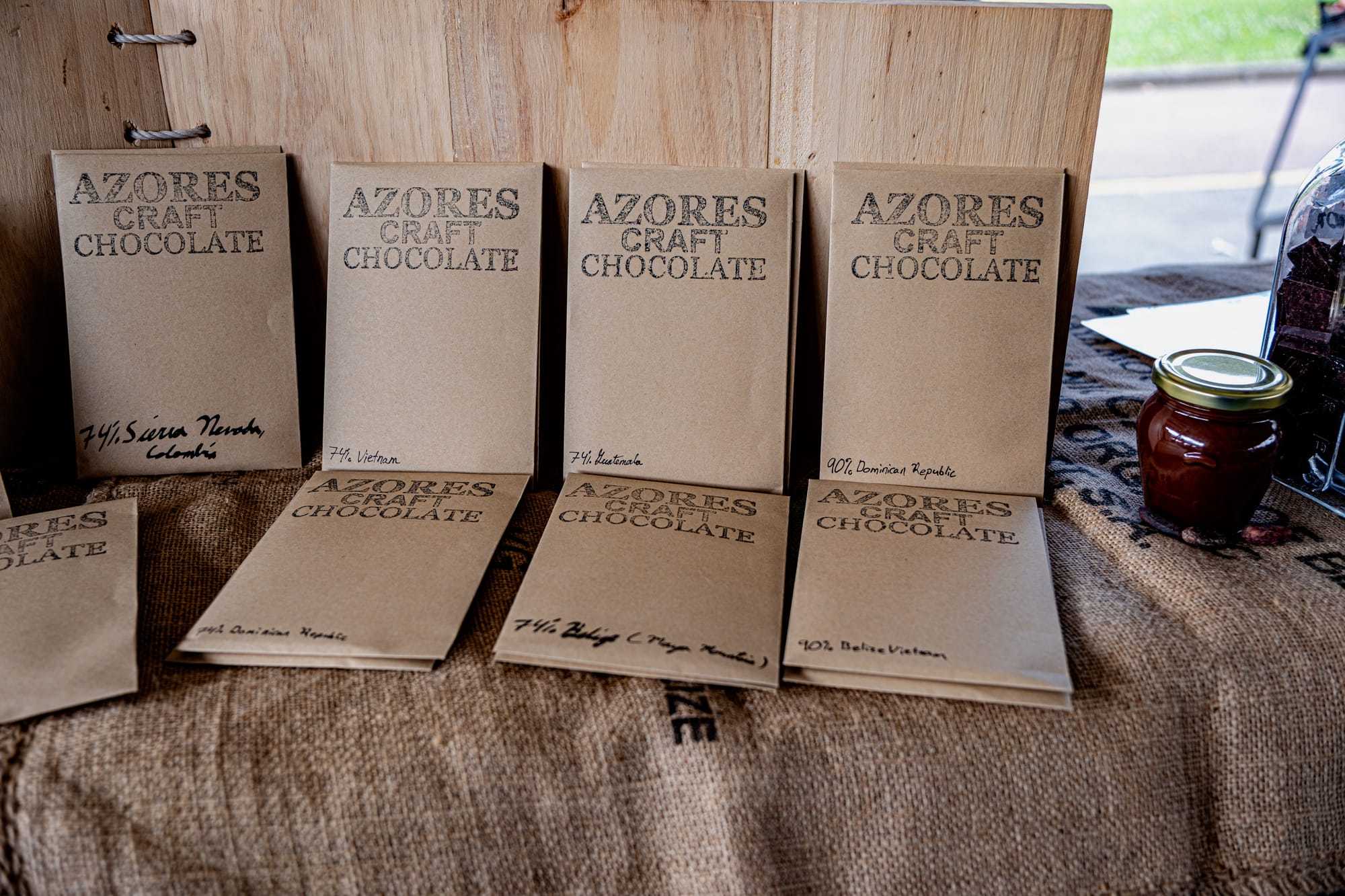
Locally made, quietly inventive—mushroom kits and Azorean craft chocolate at the market stall
One vendor was selling Monstera deliciosa fruit, which none of us had tried before. It was tangy and strange.
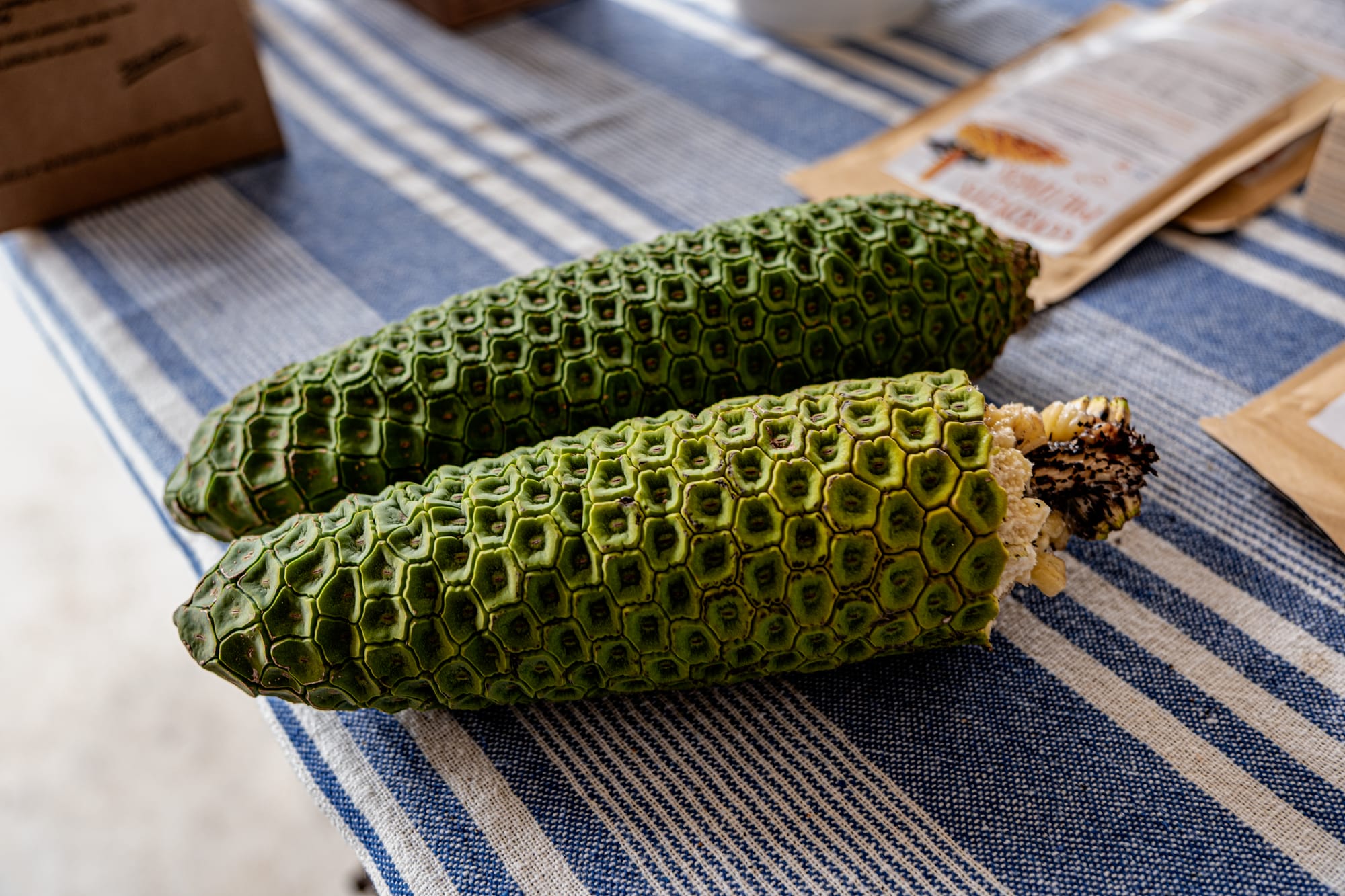
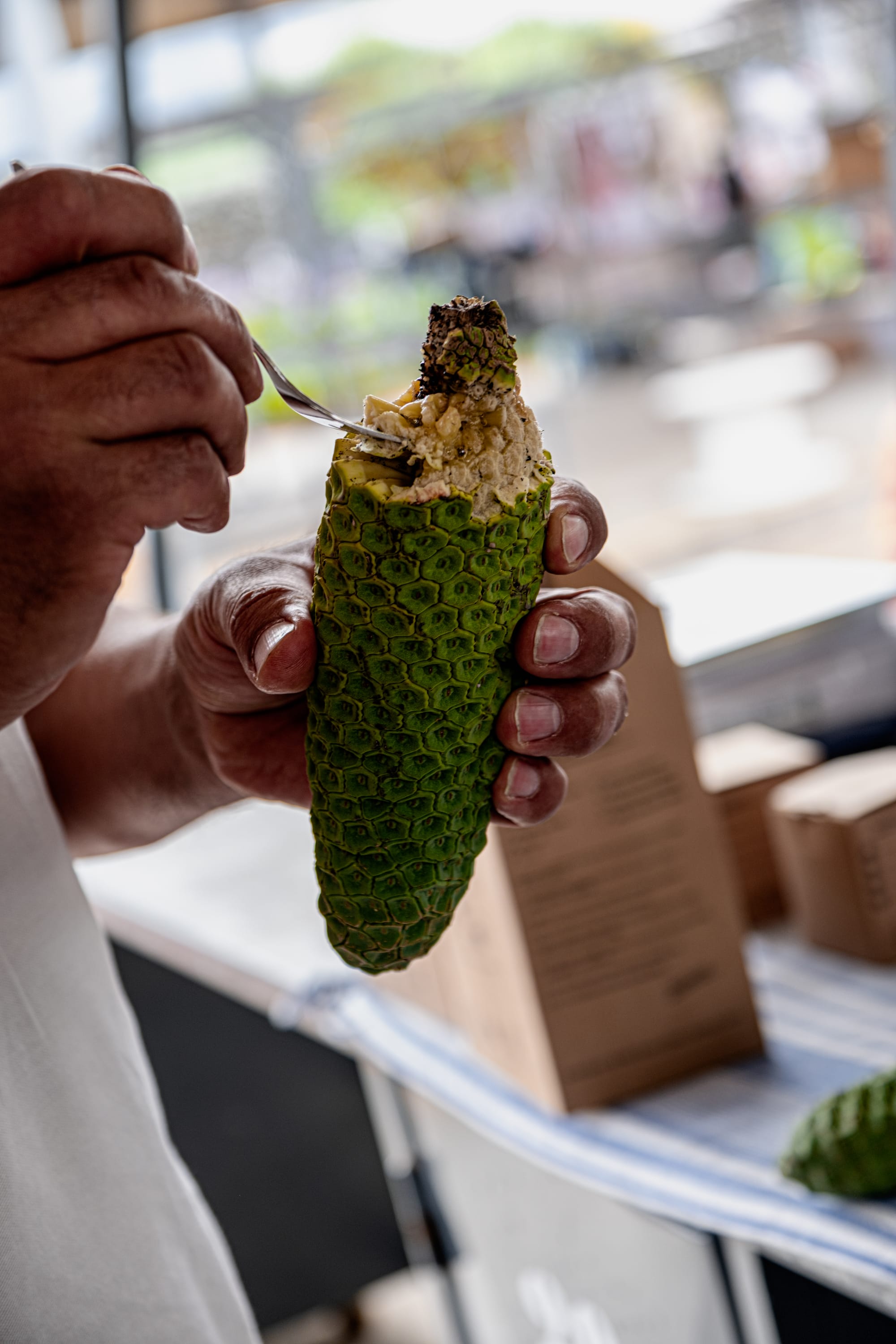
Tasting something new: Monstera deliciosa, sold whole and eaten as it ripens
Toward the back of the market, there’s another kind of offering: chickens and ducks, sold live, kept in cages. For us, it was unsettling to see animals this way, waiting in the heat, quietly trapped in metal enclosures.
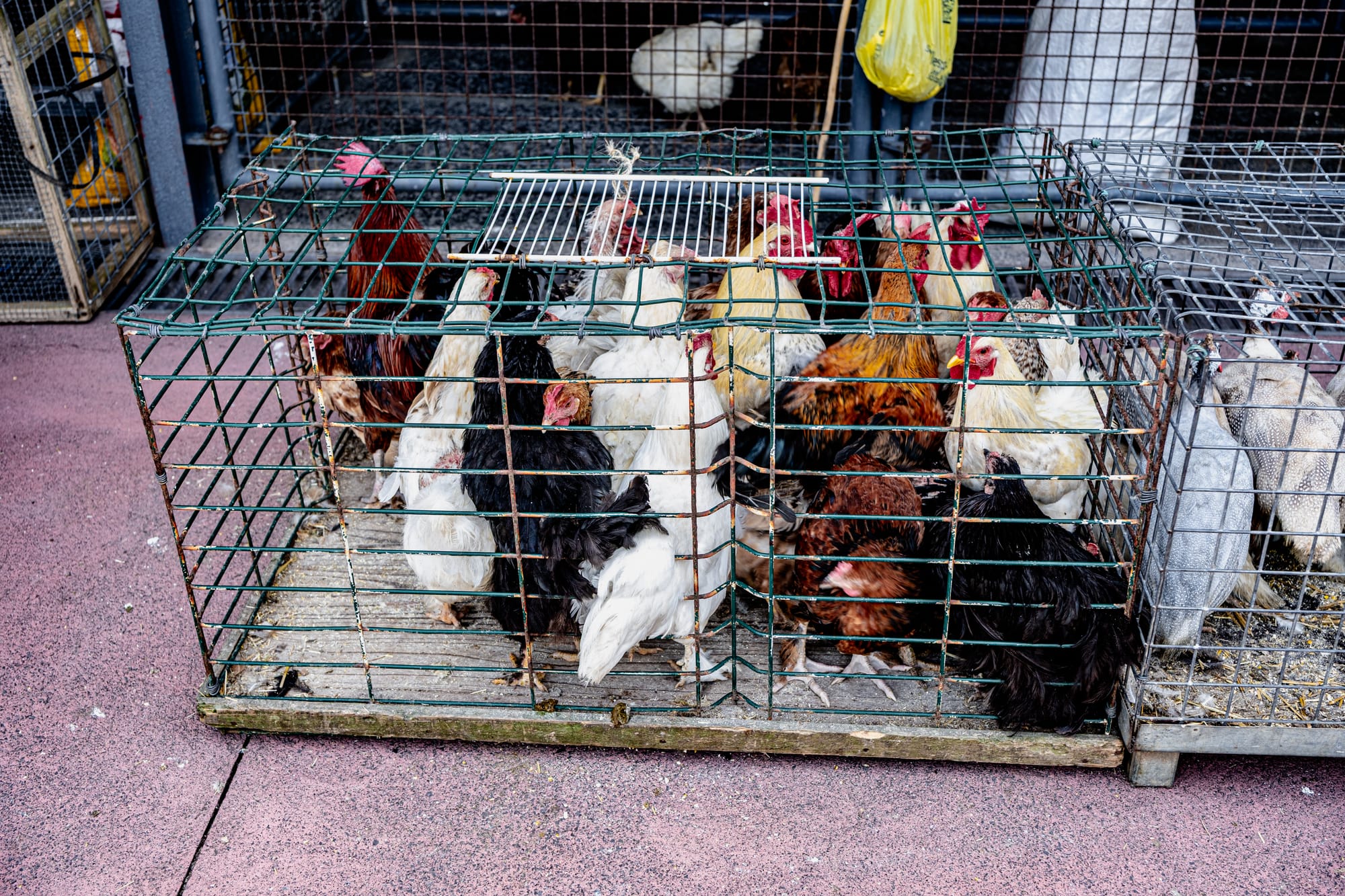
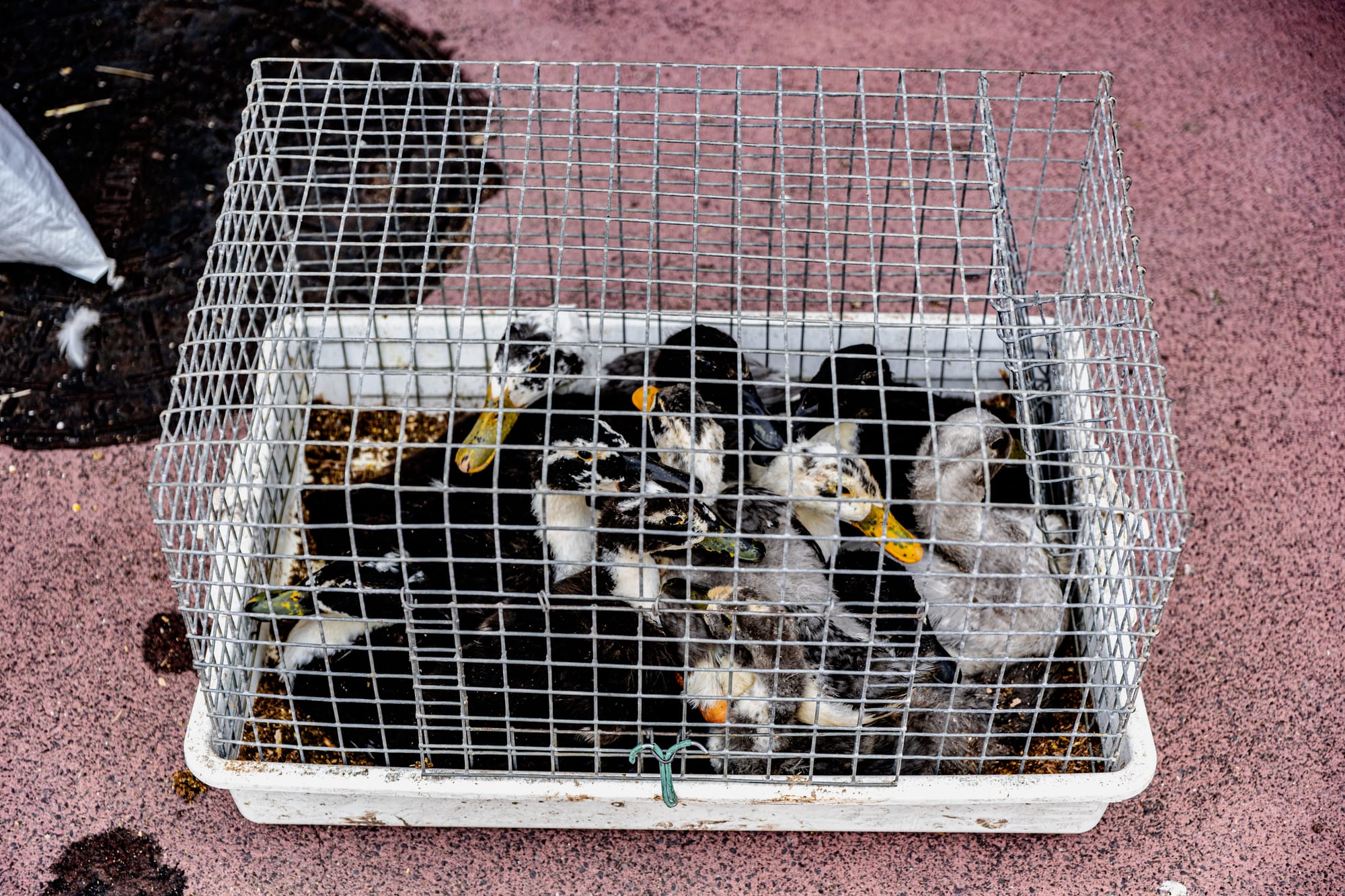
Chickens and ducks for sale—an unsettling but visible part of the market
It was hard to look at, and harder to ignore.
The kitchen, later
Back at Lava, the food we brought home made its way onto the counters and into conversations.
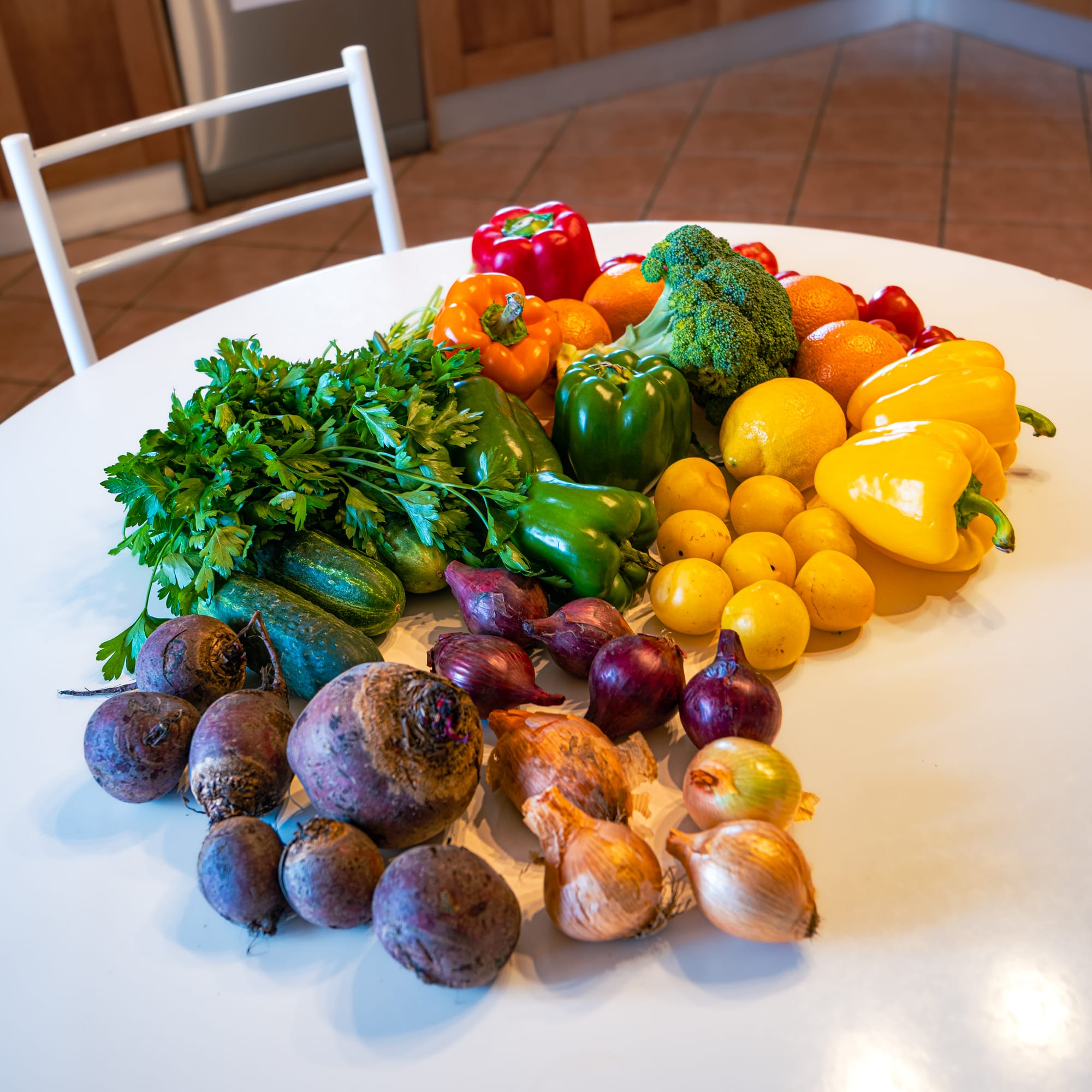
Someone would come in with a bag of peppers, and someone else would pull out the leftover parsley. Cooking happened loosely. Sometimes just one person at the stove. Other times four or five people all chopping, washing, seasoning, passing spices back and forth without asking.
We made a beetroot soup with chickpeas. An Argentinian corn soup with grated carrot. A risotto of everything.
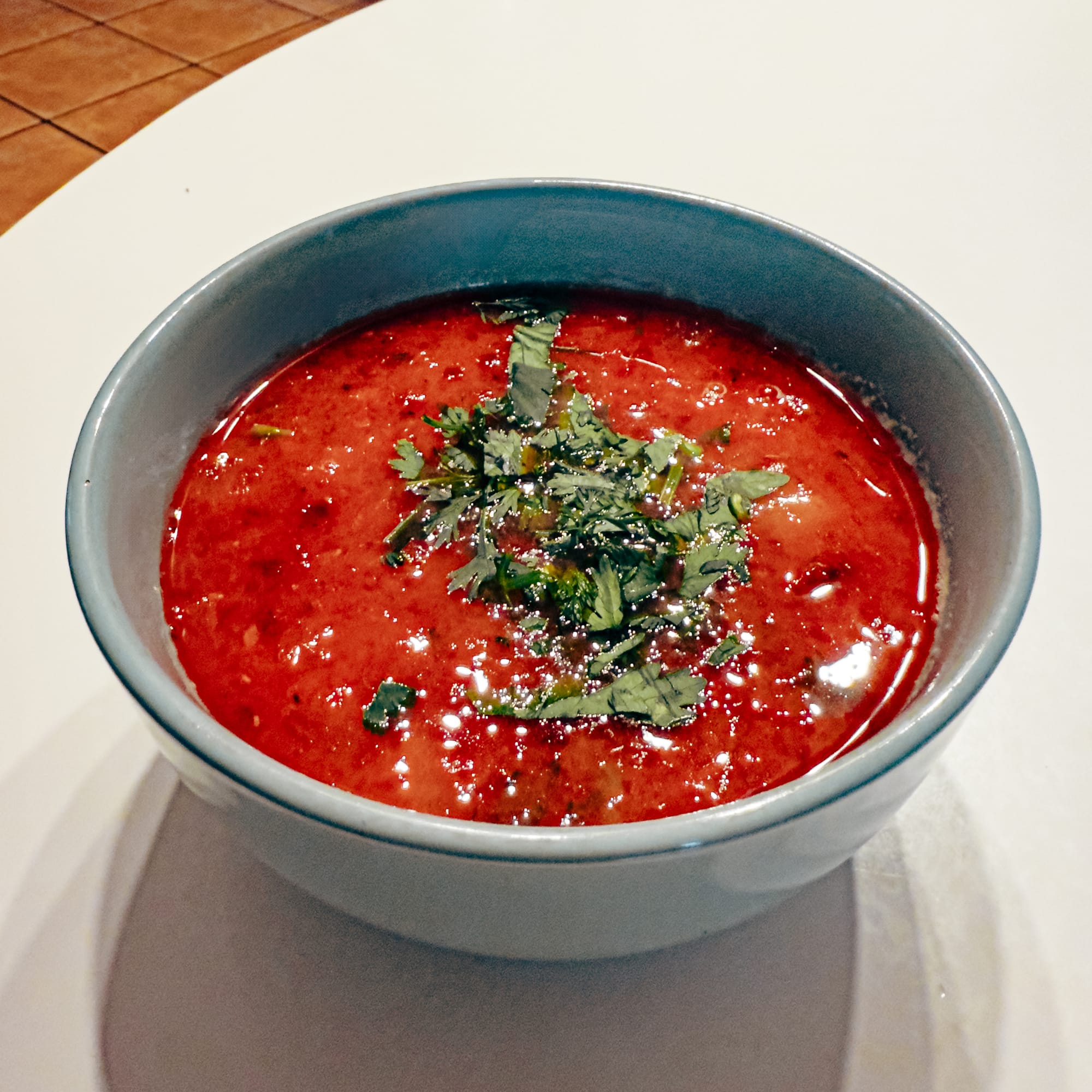
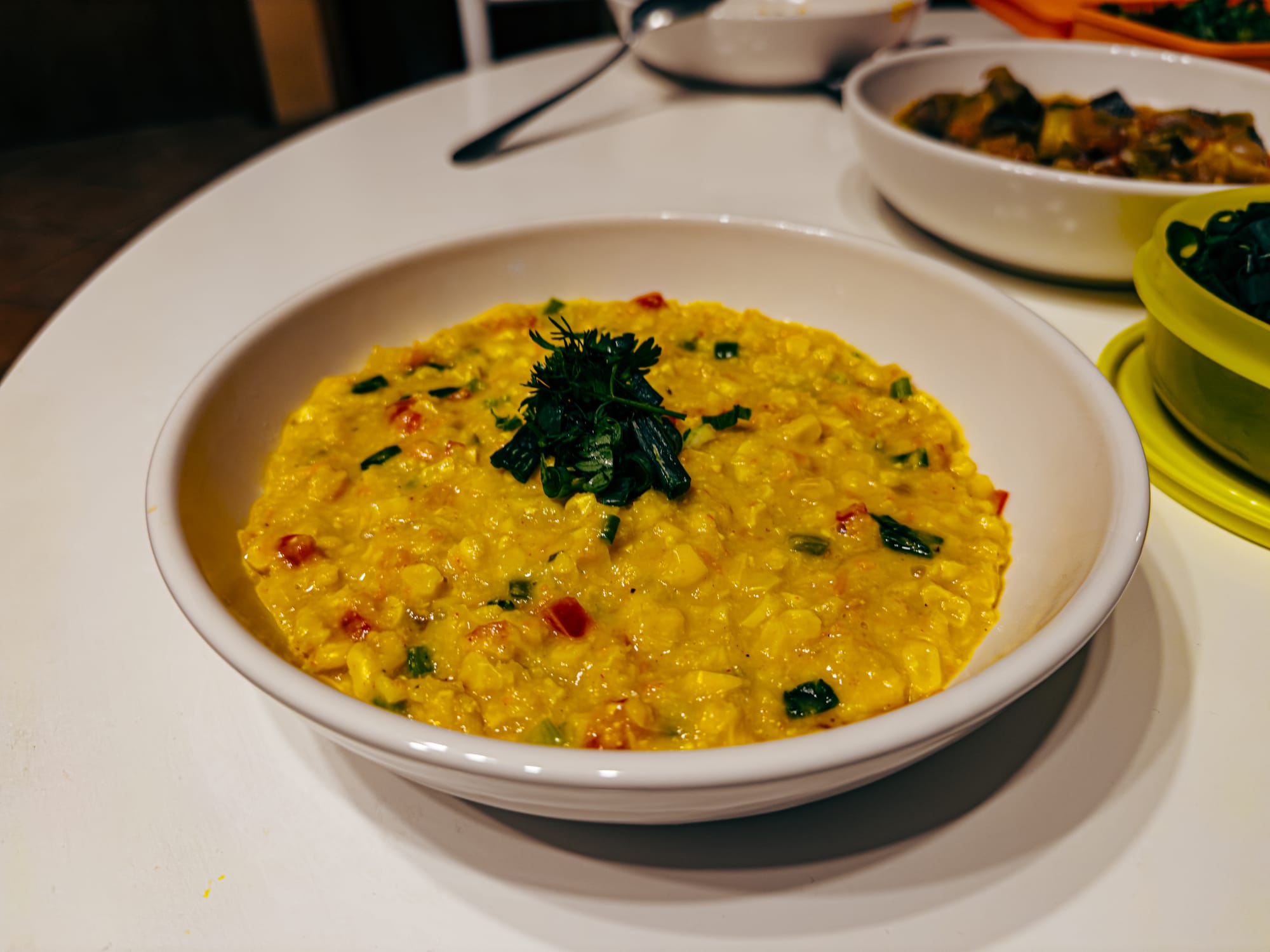
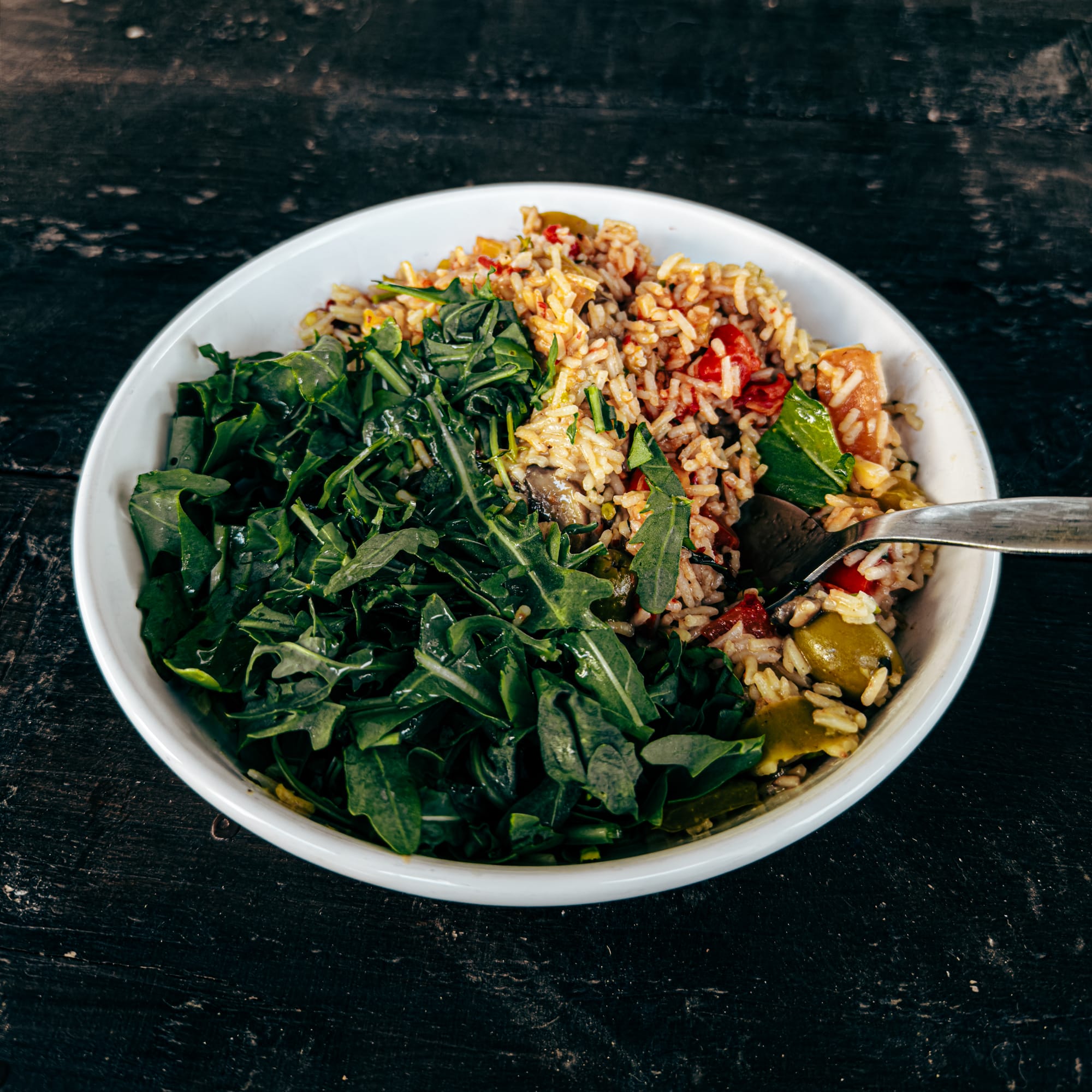
Shared meals made from market finds—simple, colorful, and cooked together at Lava
Fresh fruit turned up in nearly every meal, either as dessert or something to snack on while cooking.
It was the kind of cooking that doesn’t require a recipe or a plan. Just a few good ingredients, good company, and a table to sit at.
When to go, and what to know
Mercado Agrícola de Santana runs on:
- Thursdays and Saturdays
- From morning until early afternoon
The earlier you arrive, the more selection you’ll have. It’s best to go before midday, when the greens are still crisp and the fruit hasn’t been picked over. Vendors are friendly and prices are reasonable. Most things are sold by the kilo. Cash is easiest—few stalls take cards—and bags are usually available if you forget to bring your own.
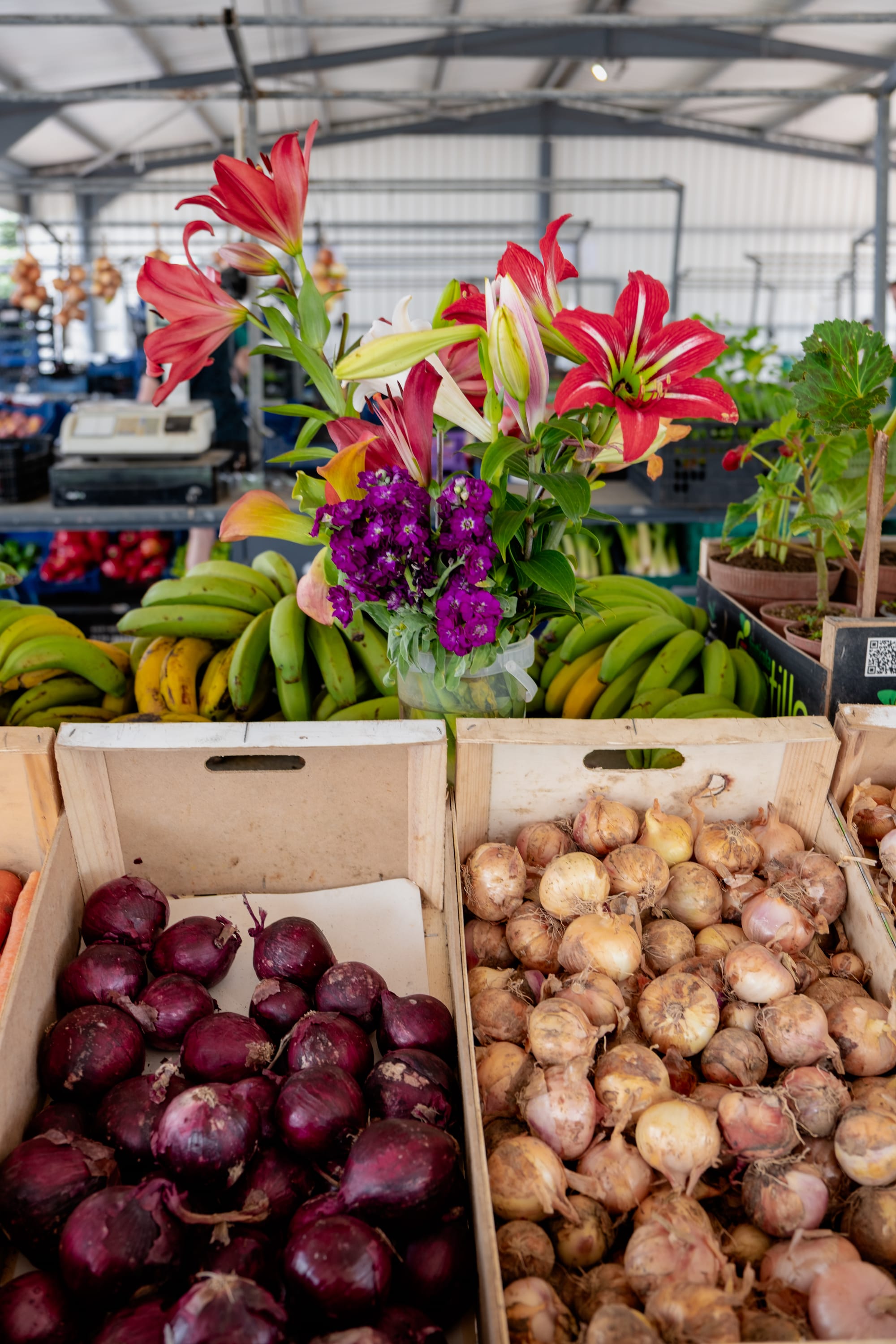
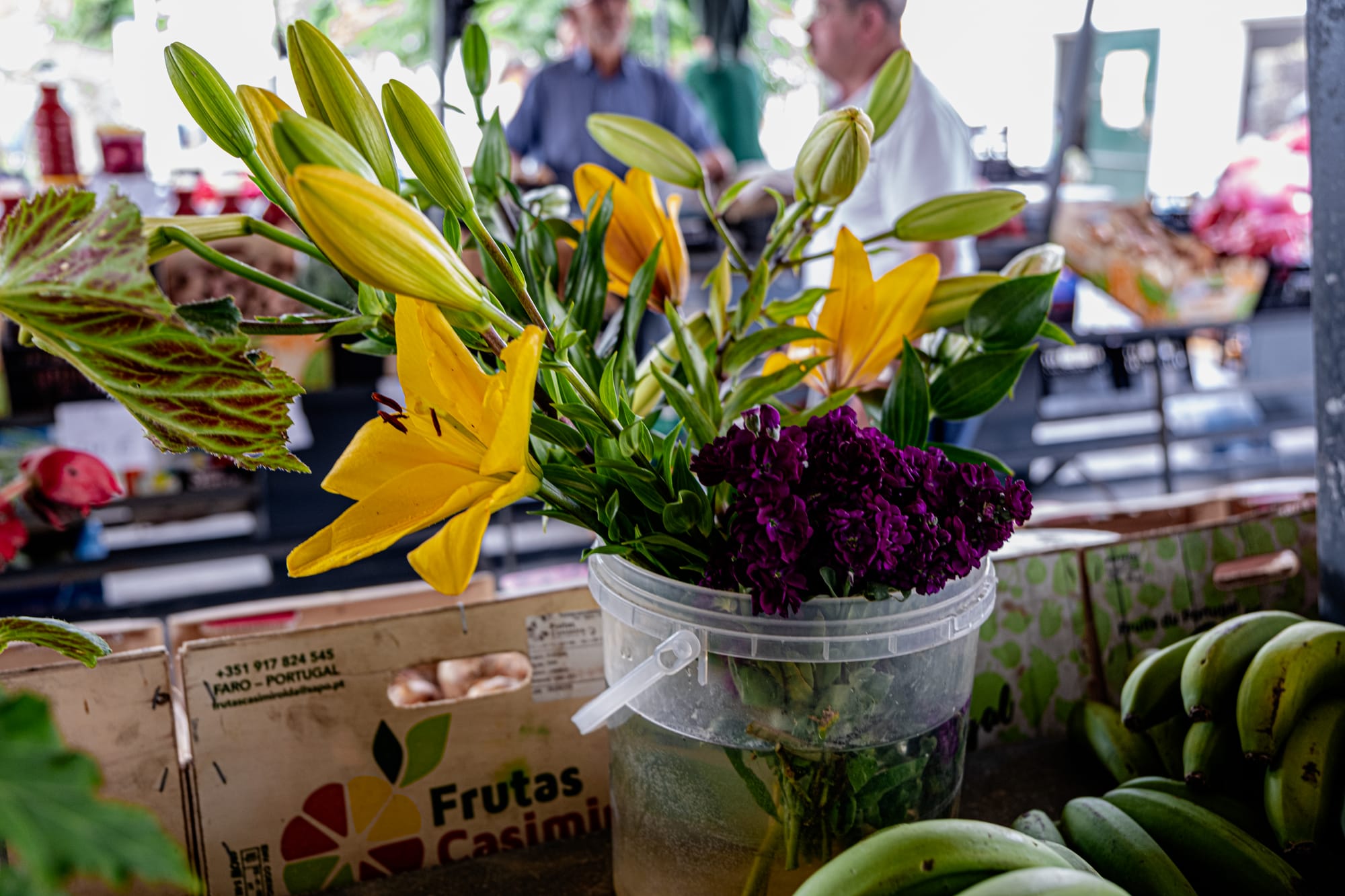
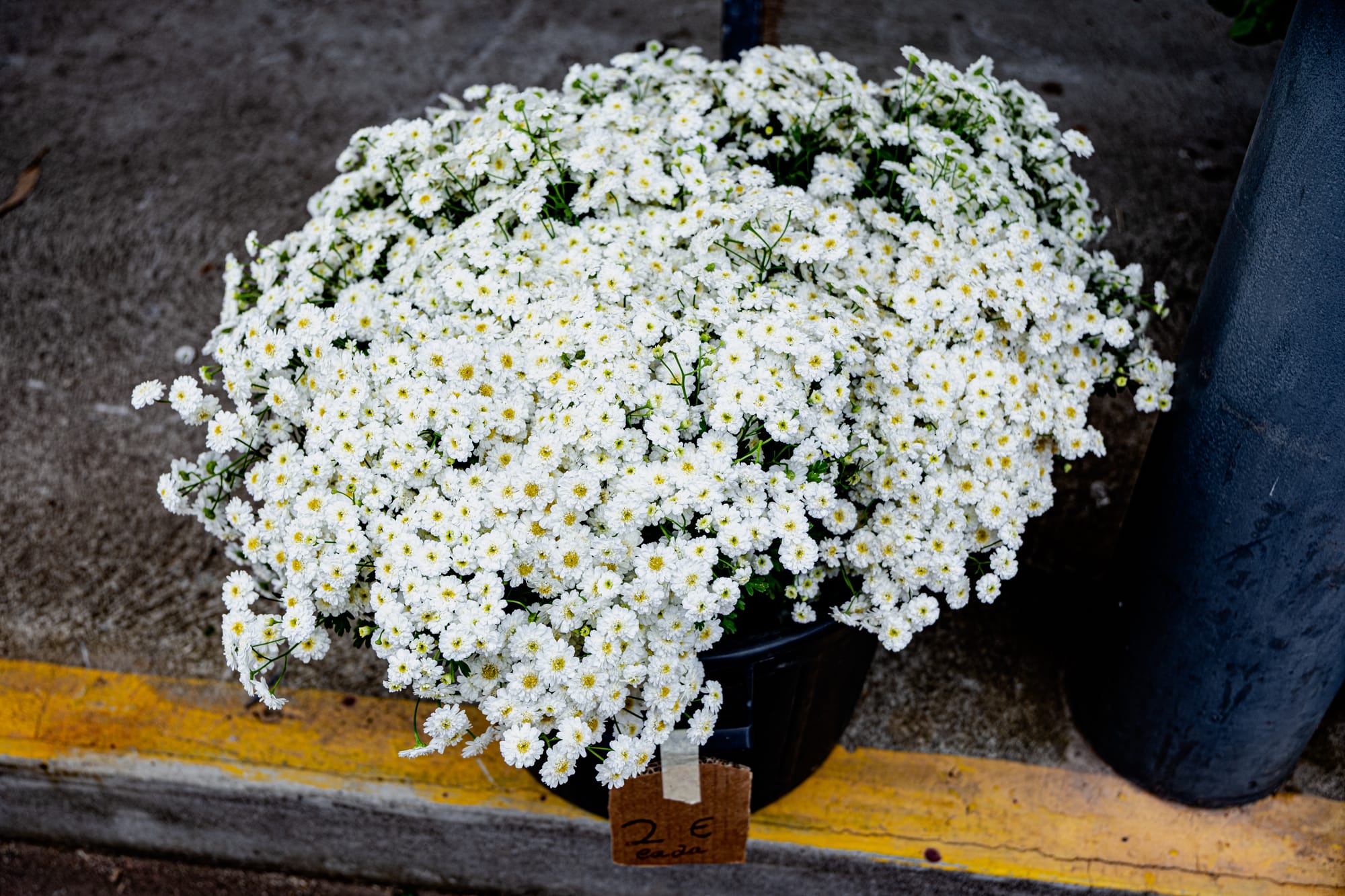
Not just food—fresh flowers are part of the weekly rhythm at Mercado Agrícola de Santana
From Lava Coliving, it’s an easy 25-minute walk through a quiet stretch of road, and into the buzz of the market itself. You’ll know you’re getting close when you start passing people coming the other way, carrying crates of oranges or a few loose herbs wrapped in paper.
Its worth noting that the walk back is at a slight elevation, and if you do plan to buy a lot, it can be tiresome carrying things back. We preferred going by car when we were able to get a ride with other colivers.
Why it matters
That small act—picking up fruit for someone else, buying an extra bunch of parsley because someone used the last of it yesterday—quietly shaped the days. The market became part of the rhythm of being there.
As digital nomads, it can be easy to fall out of the habit of cooking when there are so many excellent, affordable, and convenient options surrounding you. São Miguel, and Lava Coliving in particular, provided a nice refuge for us to regain the skill and practice of making our own food.
We believe that cooking is an incredibly creative act, and that small and daily practices of creation on our own accord can have long-lasting impacts in other creative life pursuits.






